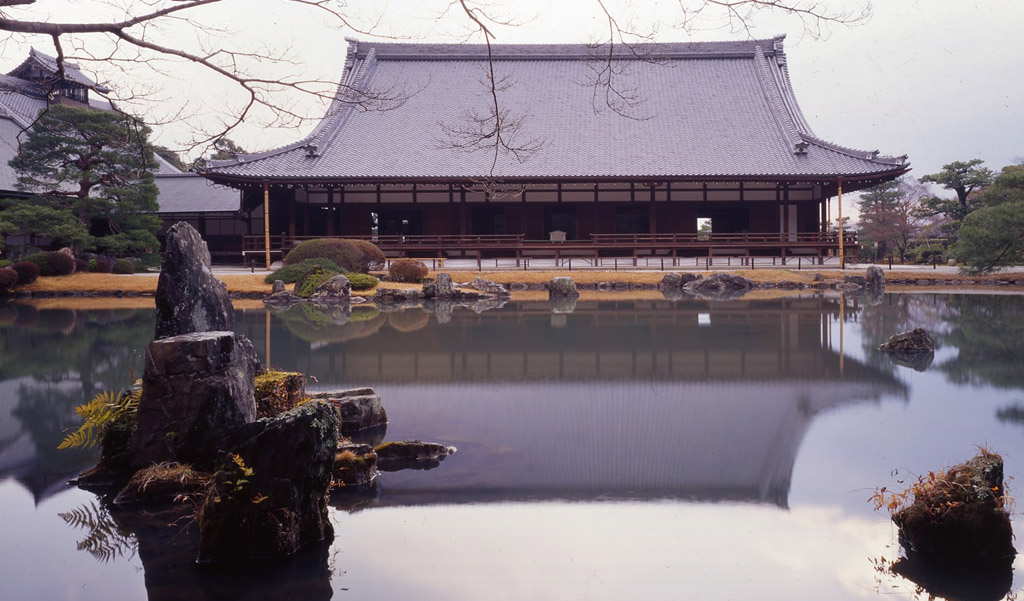A Captivating Zen Sanctuary
Tenryuji Temple stands as the most significant temple in Kyoto’s Arashiyama district, ranking first among the city’s five great Zen temples and now a UNESCO World Heritage site. As the head temple of its own school within the Rinzai Zen sect, Tenryuji attracts visitors worldwide with its rich history and stunning garden landscapes.
Key Information
- Established in 1339
- UNESCO World Heritage Site
- Ranked first among Kyoto’s five great Zen temples
- Famous for its dry landscape garden
- Head temple of the Tenryuji school of Rinzai Zen Buddhism
A Witness to Centuries of History
Tenryuji was built in 1339 by Shogun Ashikaga Takauji to commemorate Emperor Go-Daigo, who had recently passed away. These two historical figures were once allies before turning against each other in a struggle for supremacy over Japan. Takauji’s construction of the temple was intended to appease the former emperor’s spirit.
While the temple buildings have been repeatedly destroyed by fires and wars throughout history, the garden has survived in its original form. Most of the current structures, including the main hall (Hojo), drawing hall (Shoin), and temple kitchen (Kuri) with its distinctive small tower, date back to the Meiji Period (1868-1912).
Main Attractions
Zen Garden
The garden, designed by the famous landscape architect Muso Soseki, is Tenryuji’s most striking feature. A central pond surrounded by rocks and pine trees, with the lush Arashiyama mountains as a backdrop, creates a perfect harmony of natural elements. Muso Soseki not only designed the garden but also served as Tenryuji’s first head priest.
Main Hall (Hojo)
As the temple’s primary building, the Hojo’s interior is decorated with simple yet dignified elements, reflecting Zen aesthetic principles. Visitors can sit in quiet meditation here, experiencing the essence of Zen culture.
Drawing Hall (Shoin)
The Shoin serves as the temple’s reception hall and offers an excellent vantage point for admiring the garden. From here, one can take in the entire panorama of the beautiful landscape.
Temple Kitchen (Kuri)
The Kuri, with its unique small tower, is one of Tenryuji’s iconic structures. Although no longer used as a kitchen, its distinctive architectural style is still worth admiring.
Best Time to Visit
Tenryuji is beautiful year-round, but it’s especially stunning during cherry blossom season in spring and the autumn foliage season. For a quieter experience, consider visiting early in the morning soon after opening.
Getting There
From Kyoto Station, take the JR train to Saga-Arashiyama Station (10-15 minutes, 240 yen one way). Tenryuji is a 5-10 minute walk from there.
Alternatively, take the Keifuku Electric Railroad (also known as Randen) to Arashiyama Station. The temple is a short walk from this station.
Hours and Admission
- Open: 8:30 AM – 5:00 PM (last entry at 4:50 PM)
- Open every day of the year
- Admission: 500 yen for the garden, additional 300 yen for temple buildings
Visitor Tips
- Consider buying tickets in advance to avoid queues
- Wear comfortable shoes as you’ll be walking around the grounds
- Respect temple etiquette: maintain silence and don’t touch artifacts
- Bring a camera to capture the beautiful garden scenery
- Consider participating in a Zen meditation experience to deepen your understanding of Zen culture
Official Website
Conclusion
Tenryuji Temple is not just a historical site but a sanctuary for spiritual rejuvenation. Whether you’re interested in Japanese history and culture or seeking inner peace, Tenryuji is a must-visit destination. When in Arashiyama, don’t miss the opportunity to experience the allure of this Zen jewel and let your spirit soar amidst centuries of history and natural beauty.
